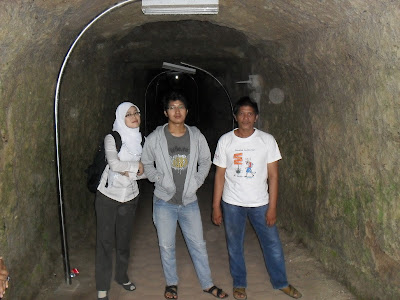The WHO defines health as 'a state of complete physical, mental, and social well-being and not merely the absence of disease, or infirmity'. This board definition can be applied equally to developed and developing countries and to both genders. Health is cumulative state, yo be promoted throughout life in order to ensure that full benefits are enjoyed in later years. Good health is vital to maintain an acceptable quality of life in older individuals and to ensure the continued contributions of older persons to society.
The diseases is something happened to our body and make us unhealthy. A communicable disease is an illness due to a specific infectious (biological) agent or its toxic products capable of being directly or indirectly transmitted (from man to man, animal to man, animal to animal, or environment to man).
Chikungunya is an emerging vector-borne disease of high public health significance in WHO's South-East Asia Region. It has been reported from countries of South and East Africa, South Asia, South-East Asia and, in 2001, from Italy. In the South-East Asia Region, outbreaks have been reported from India, Indonesia, Maldives, Myanmar, Sri Lanka and Thailand. Although not a killer disease, high morbidity rates and prologed polyarthritis lead to considerable disability in a proportion of the affected population and can cause substantial sosioeconomic impact in affected countries.
Chikungunya is an arboviral disease transmitted by Aedes mosquitoes. The virus was first isolated in 1953 in Tanzania. Chikungunya virus is a member of the genus Alphavirus and family Togaviridae. The disease typically consists of an acute illnes characterised by fever, rash, and incapacitating arthralgia. The word chikungunya, used for both the virus and the disease, means "to walk bent over" in some east African languages, and refers to the effect of the joint pains that charaterise this dengue-like infection. Chikungunya is a specifically tropical disease, but it is geographically restricted and outbreaks are relatively uncommon.
Epidemiology of Chikungunya Fever
Chikungunya fever is caused by virus of same name (CHIK virus in short) which is an RNA virus that belongs to the Alphavirus genus of the Togaviridae, the family that comprises a number of viruses that are mostly transmitted by arthropods.
In Asia and the Indian Ocean region the main chikungunya virus vectors are Aedes aegypti and Aedes albopictus. A larger range of Aedes species ( Aedes furcifer, Aedes vittatus, Aedes fulgens, Aedes luteocephalus, Aedes dalzieli, Aedes vigilax, Aedes camptorhynchites) transmit the virus in Africa, and Culex annulirostris, Mansoinia uniforms, and Anopheles mosquitoes have also occasionally been incriminated.
Aedes albopictus has a wide geographical distribution, is particularly resilient, and can survive in both rural and urban environments. Aedes aegypti is the common vector responsible for transmission in urban areas whereas Aedes albopictus has been implicated in rural areas. Recent studies indicate that virus has mutated enabling it to be transmitted by Aedes albopictus.The Aedes mosquito breeds in domestic settings such as flower vases, water-storage containers, air coolers, etc and peri-domestics areas such as construction sites, coconut shells, discarded household junk items (tyres, plastic and metal cans, etc). The adult female mosquito rests in cool and shady areas in domestic and per-domestic settings and bites during day time.
In the South-East Asia Region, Chikungunya virus is maintained in the human population by human-mosquito-human transmission cycle that differs from the sylvatic transmission cycle described of the African continent. A high vector density as seen in the post monsoon season accentuates the transmission. Chikungunya fever epidemics display cyclical and seasonal trends. There is an inter-epidemic period of 4-8 years (sometimes as long as 20 years).
Outbreaks are most likely to occur in post-monsoon period when the vector density is very high. Human beings serve as the chikungunya virus reservoir during epidemic periods. During inter-epidemic periods, a number of vertebrates have been implicated as reservoirs. These include monkeys, rodents, birds, and other vertebrates. The exact nature of the reservoir status in South-East Asia Region has not been documented.

The only effective preventive measures consists of individual protection against mosquito bites and vector control. Control of both adult and larval mosquito populations uses the same model as for dengue and has been relatively effective in many countries and settings. Mosquito control is the best available method for preventing chikungunya. Breeding sites must be removed, destroyed, frequently emptied, and cleaned or treated with insecticides. However, vector control is an endless, costly, and labour-intensive measure and is not always well accepted by local populations, whose cooperation is crucial.Surveillance is also importants for early identification of outbreaks.
Sources:
(Ageing-exploding the myths. Ageing and Health Programme (AHE). Geneva: WHO, 1999: 1-21)
(Guidlines on Clinical Management of Chikungunya Fever WHO Regional Office for South-East Asia)
(Gilles Pialoux, et al., Chikungunya, An Epidemic Arbovirosis, Lancet Infect Dis, 2007;7;319-27)

































